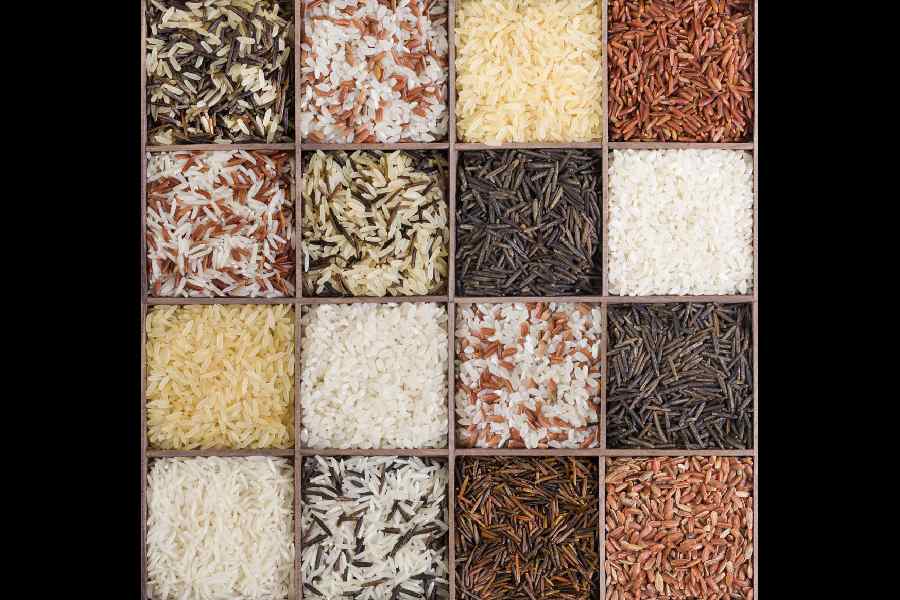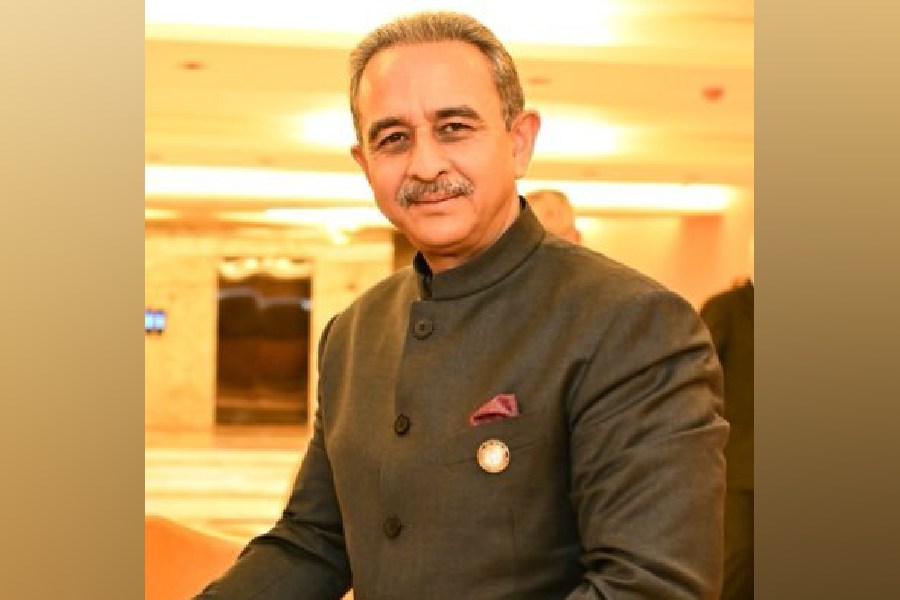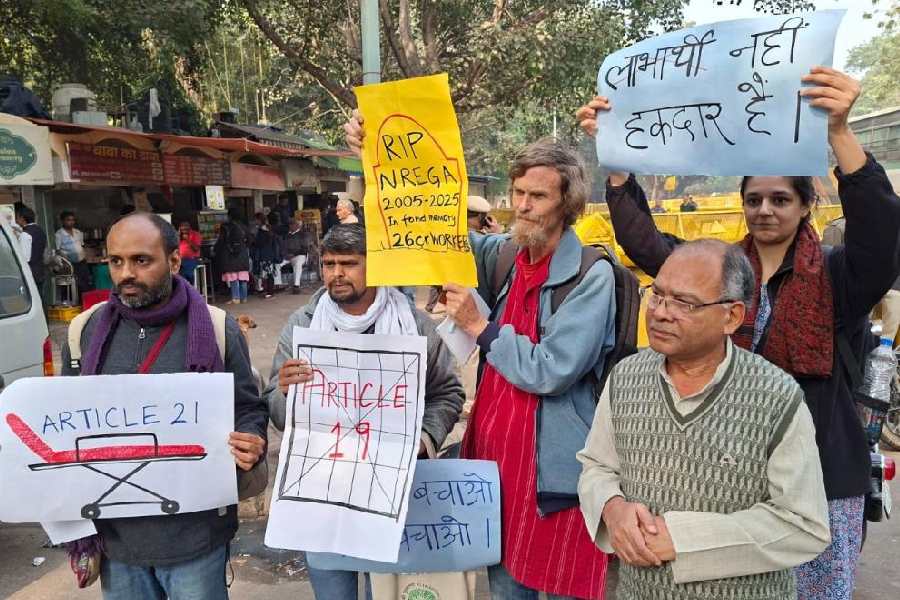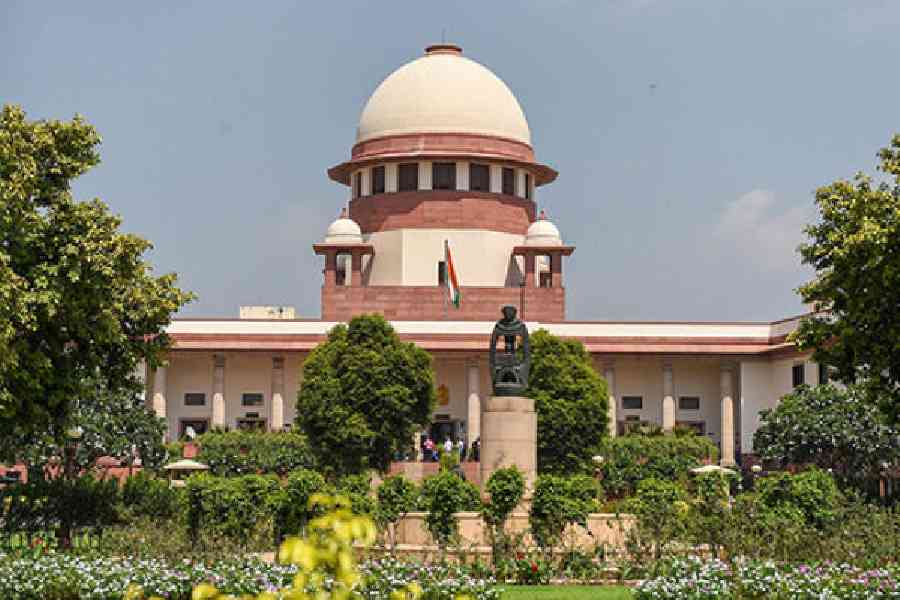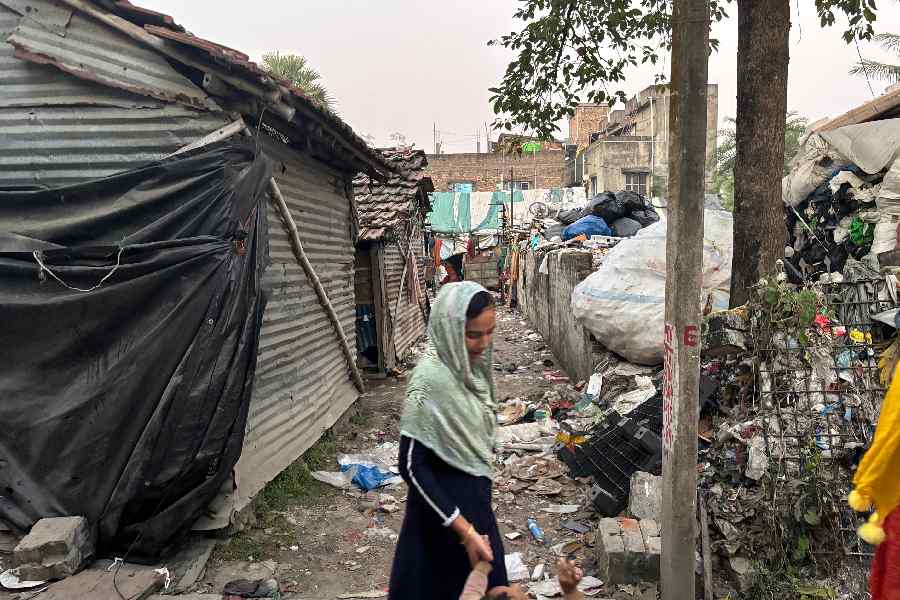The word nabanna means “new rice” in Bengali and usually refers to the harvest festival celebrating the aman dhaan or kharif crop harvested in November and December. Nababarsha refers to the Bengali New Year, which is celebrated in April. When these concepts — nabanna and nababarsha — were coined, there was no way of yoking the two. But, like much else in this topsy-turvy world, it is now a reality. It is also true that the new year in peak summer marks the start of the boro harvest, the actual nabanna.
“Boro dhaan is harvested right through Baisakh (mid-April to mid-May),” says Rafikul Alam Sahana, who cultivates rice in Katwa in East Burdwan district, which is also known as the rice bowl of West Bengal.
Boro paddy is a comparatively recent phenomenon. “This fertiliser and water-intensive boro paddy cultivation we see now with modern, high-yielding seeds happened because of the Green Revolution,” says Anupam Pal, who is a rice scientist and a former state government employee.
Boro dhaan was popularised in Bengal in the 1970s. Before that, the January to March growing season was used to cultivate pulses, mustard, sesame, potatoes and onions. “Some paddy was also cultivated near water bodies. Varieties such as kala boro, lal boro, lathishal. There was also guligati, the deep water boro paddy that is now extinct,” says Pal. The paddy was irrigated with a dong, a boat-shaped device that scooped out water from ponds or rivers and poured it onto the fields. There was very little land suited to boro paddy cultivation, Pal adds.
Robin Bannerjee has been working with farmers for three decades, trying to convince them to return to the traditional way of farming. He says that lal boro and kala boro used to be grown in standing water. “Boro dhaan used to be cultivated in marshy areas or alongside the G.T. Road in Hooghly and Burdwan districts, where the water for cultivation came from the nayanjuli or canal running parallel to the highway,” says Bannerjee.
Before the Green Revolution, a total of 1,10,000 native varieties of rice were cultivated in India, noted eminent rice scientist R.H. Richharia. An estimated 15,000 varieties are reported to have been cultivated in undivided Bengal alone in the 1940s. The recorded number of landraces — traditional crop varieties — cultivated before the1970s in West Bengal was 5,556, while across the border the Bangladesh Rice Research Institute recorded 12,479 names. Now, most of the rice cultivated across India is limited to 10 high-yielding modern varieties.
Native seeds produced 3 tonnes of crop per hectare, whereas high-yielding varieties produce 8-9 tonnes in optimum conditions. The advertised high yield of the latter led to its popularity, piggybacking on the memories of the 1943 Bengal famine.
Says Bannerjee, “There was severe drought in north Bihar in the early 1960s. That was used by America to fan the fear of famine and influence India into buying these modern seeds they were marketing.”
These new seeds actually needed much more water than native varieties and farmers had to install pumps to access groundwater for irrigation. That apart, the farmer had to buy chemical fertiliser by the sack, pesticides and, of course, the seeds themselves. “While for native rice, farmers woulduse seeds from the previous year, the modern seedshad to be bought,” explains Bannerjee. In the traditional method, fish and crabs would spawn inthe standing water in paddyfields, which farm labourers were free to catch to supplement their diet and barter for foodstuff they could not afford.
The high-yielding seeds can be used for three crop cycles, but the yield reduces with each cycle and after three years, they must be replaced. For hybrid crops, new seeds have to be planted each year. According to experts, these seeds need to be immersed in pesticide before planting. While it makes the paddy immune to certain pests, it also kills all plants and animals in the fields.
Why did the farmer adopt a style of agriculture so different to the traditional one? “Because the government pushed it, and they had faith in the government, because they wanted to produce more, because they aspired to a better lifestyle,” says a farmer, who is trying to popularise organic farming in the Sunderbans; he does not want to be identified. What remains unsaid isthat the farmers had no idea of the side effects.
“People do not treat Earth as their mother anymore. They do not treat fellow creatures as their brothers. They have become self-centred. They only think of themselves, of their own profit. Farmers are no different,” says Sukumar Sarkar, who calls himself a socio-political worker who works in the area of food, food as nutrition, food as medicine. He grows basmati rice the traditional way in Jaunpur, Uttar Pradesh. He calls it cow-based farming. “It is an interdependent cycle. You need cows to fertilise fields, hens and ducks to eat up pests. Farmers must keep livestock too,” he says while drawing attention to the fact that while a kilo of fertiliser could on an average grow 14 kilos of rice at the beginning of the Green Revolution, it grows only 3 kilos now.
“The average yield of rice in India in recent years is nearly 3 tonnes per hectare,” says Pal, which is the same as from traditional seeds.
In Bengal, about 140 varieties of traditional rice are still cultivated. However, more than 90 per cent of the landraces grown in the state even half a century ago are lost. The loss, writes Debal Deb in his 2021 paper titled Rice Cultures of Bengal, leads to derangement of local food cultures, and food insecurity for poor and marginal farmers, not to speak of the erasure of a vast body of knowledge. He goes on about how this has also “disintegrated the communitarian ethos among Bengali farmers”.
If paddy seed is not sown for two consecutive years, it spoils. No matter what gene banks claim, the only way to preserve these varieties is to grow them every year, says India’s rice conservationist Deb. In his 1.7 hectare farm near the Niyamgiri hills in Odisha, Deb keeps alive nearly 1,500 varieties of native seeds by cultivating them every year. It takes him a dozen days to make a planting plan such that each seed will flower at a different time so there is no cross-pollination.
Deb does not sell the seeds he preserves. Just like in olden times, he exchanges a kilo of one seed with a kilo of another traditional seed. If the farmer has no seeds to offer, he can return two kilos of the grain he grows using these seeds.
India produced a record paddy crop of 1,378 lakh metric tonnes in 2024, according to government data. West Bengal slipped from top spot to fourth place. The wheat crop too was satisfyingly large, yet India has to import wheat. More to the point, last year India was 105 on the World Global Hunger Index among 127 countries.
“The hunger index measures hunger by nutrition and we are a malnourished country,” says Pal. The first culprit, he says, is the milled rice we eat. “The bran, which has all the nutrients, is polished away in rice mills, leaving just the carbohydrate-rich grain. It might fill the stomach but cannot nourish,” he adds.
Deb has been working on decoding the nutrient value of traditional rice. He has found varieties rich in iron, zinc, antioxidants, even silver. The grain with traces of silver is called garibsal or poor man’s rice. Unlike Manila’s International Rice Research Institute-promoted genetically modified iron-fortified rice, which they claim has 8.9mg of iron per kilo, the 68 native varieties Deb and his team have documented contain up to 350mg of iron per kilo of rice.
Deb has also identified a strain of rice that has the essential fatty acids found only in mother’s milk, which are required for brain development. He has identified 15 native varieties of rice that give a better yield than high-yielding seeds do in optimum conditions. And they do not need expensive chemical fertiliser.
Whether you call it organic farming, cow-based farming or traditional farming, the truth remains that the only way forward is going back.

